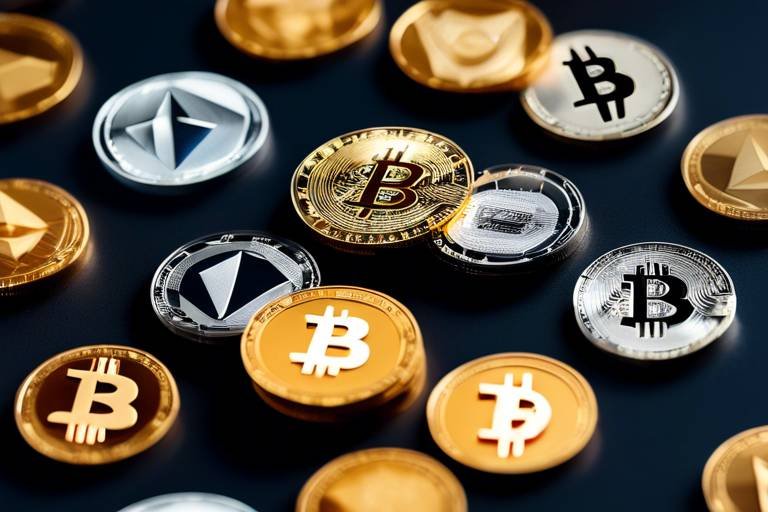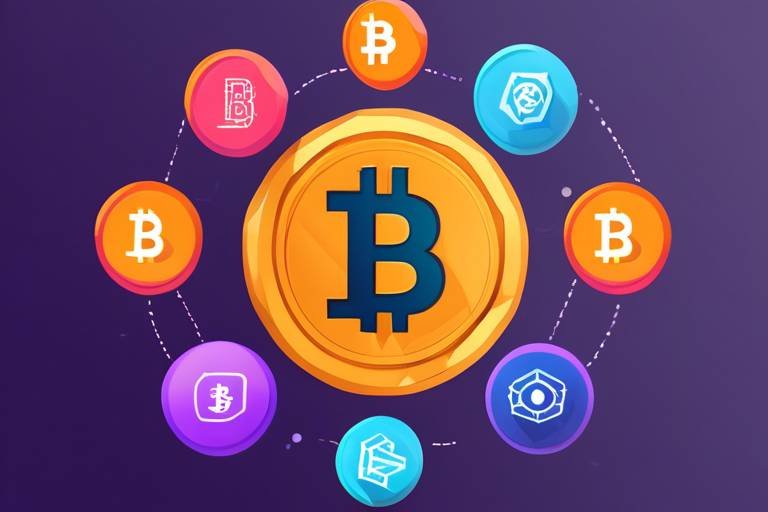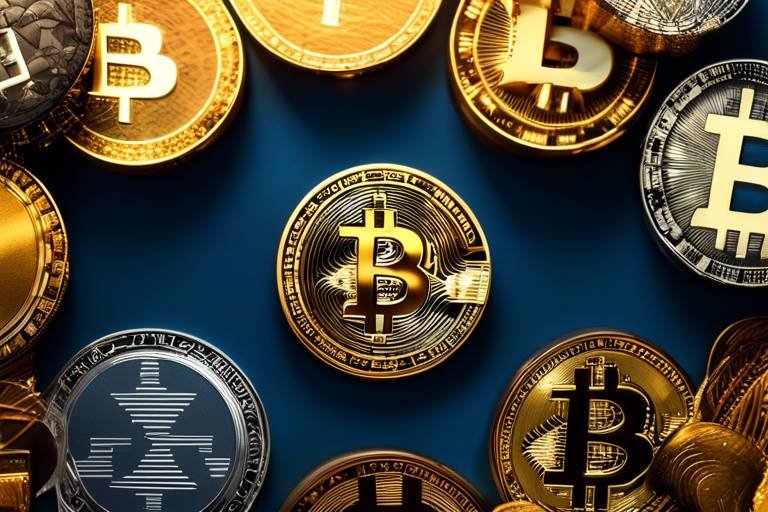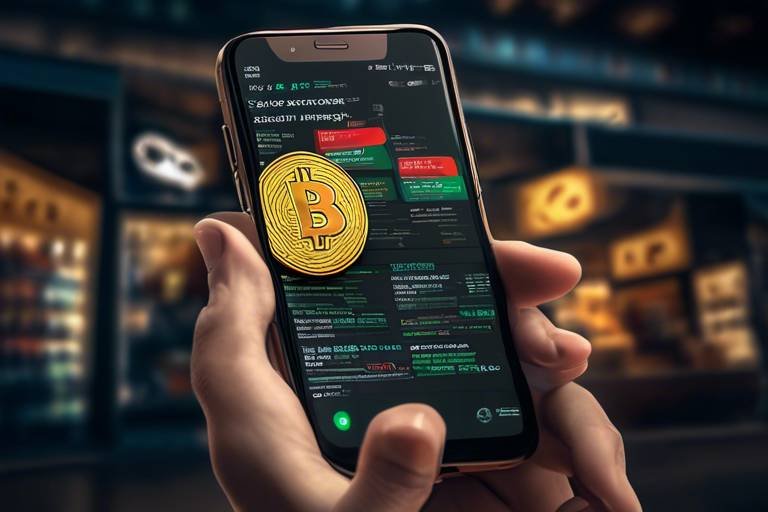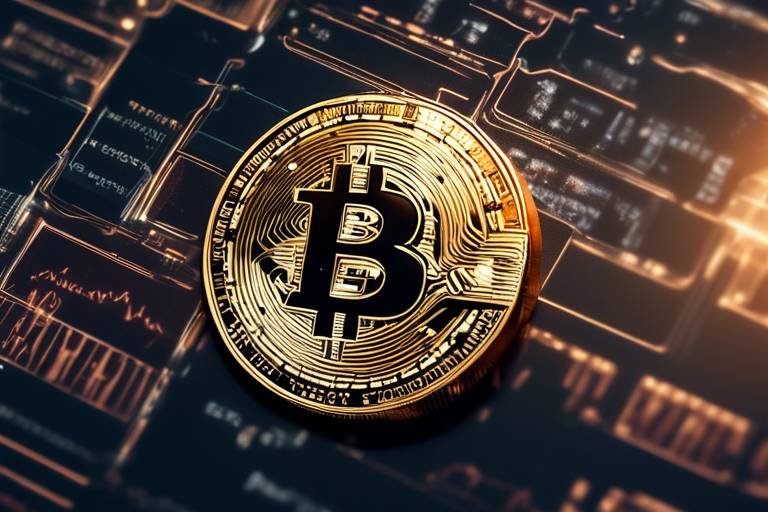The Rise of Decentralized Prediction Markets
The world of finance and information is rapidly evolving, and at the forefront of this transformation are decentralized prediction markets. These innovative platforms are changing the way we think about forecasting future events, whether they pertain to sports, politics, or financial markets. Imagine a marketplace where anyone can wager on the outcome of an event, pooling collective intelligence to generate predictions that are often more accurate than traditional methods. This is precisely what decentralized prediction markets offer, leveraging the power of blockchain technology to create a transparent and secure environment for participants.
As we delve deeper into this fascinating topic, we will explore the underlying technology that makes these markets possible, the benefits they provide, and the challenges they face. The rise of decentralized prediction markets is not just a trend; it represents a significant shift in how information is exchanged and how decisions are made across various industries. From enabling more informed betting in sports to enhancing political forecasting, the implications are vast and varied.
But what exactly are decentralized prediction markets? In essence, they are platforms where individuals can buy and sell shares in the outcomes of future events. Unlike traditional prediction markets that are often controlled by a central authority, decentralized markets operate on a peer-to-peer basis, allowing for greater participation and inclusivity. This means that anyone with an internet connection can join in, leveling the playing field and democratizing access to valuable information.
Furthermore, the integration of blockchain technology ensures that all transactions are secure, transparent, and immutable. This technology not only fosters trust among participants but also reduces the likelihood of fraud and manipulation. As we navigate through the intricacies of these markets, we will also highlight the role of smart contracts—self-executing contracts with the terms of the agreement directly written into code. These contracts automate processes within the market, eliminating the need for intermediaries and streamlining operations.
In summary, the rise of decentralized prediction markets is a game-changer. They harness the power of collective intelligence, provide a platform for diverse opinions, and enhance the accuracy of predictions across various sectors. As we continue to explore this subject, we will uncover the numerous advantages these markets offer, the challenges they face, and the exciting future trends that lie ahead.
- What are decentralized prediction markets?
Decentralized prediction markets are platforms that allow individuals to buy and sell shares in the outcomes of future events, utilizing blockchain technology for transparency and security. - How do smart contracts work in prediction markets?
Smart contracts automate the execution of trades and payouts, ensuring that transactions are carried out as programmed without the need for intermediaries. - What are the benefits of using decentralized prediction markets?
These markets offer increased accessibility, lower transaction costs, and enhanced privacy for users compared to traditional prediction markets. - What challenges do decentralized prediction markets face?
Challenges include regulatory scrutiny, potential market manipulation, and technological vulnerabilities associated with smart contracts. - How might decentralized prediction markets evolve in the future?
As technology progresses, these markets are expected to integrate with decentralized finance (DeFi) and expand into new industries, providing innovative financial instruments and data-driven insights.

Understanding Prediction Markets
Prediction markets are fascinating platforms that allow individuals to buy and sell shares in the outcomes of future events. Think of them as a vibrant marketplace for ideas, where opinions are traded just like stocks. The fundamental premise is simple: participants place their bets on what they believe will happen in the future, and these collective bets create a market price that reflects the probability of a particular outcome. This process harnesses the power of collective intelligence, enabling a more accurate forecasting mechanism than traditional methods.
At the core of prediction markets is the idea that the wisdom of the crowd can lead to better predictions. For instance, if a group of people believes that a particular candidate will win an election, the market price for that outcome will rise, indicating a higher perceived probability. Conversely, if the sentiment shifts, the price will adjust accordingly. This dynamic creates a real-time feedback loop, where information flows freely, and participants can react to new insights or changing circumstances.
One of the most intriguing aspects of prediction markets is their versatility. They can be applied to a wide range of events, including:
- Political elections
- Sports outcomes
- Economic indicators
- Entertainment awards
Each of these categories benefits from the ability to aggregate diverse opinions, leading to more informed and accurate predictions. But how do these markets actually function? Essentially, they operate on the principle of supply and demand. When more people believe in a particular outcome, the price for that outcome increases, reflecting greater confidence. Conversely, if doubts arise, the price drops, indicating decreased belief in that outcome. This fluidity is what makes prediction markets so exciting and engaging.
Moreover, prediction markets are not just for gamblers or speculators; they serve as powerful tools for decision-making across various industries. For example, businesses can leverage these markets to gauge consumer sentiment before launching a new product, or policymakers can use them to assess public opinion on legislative proposals. The potential applications are vast, and as more people become aware of these markets, their influence is likely to grow.
In summary, prediction markets are an innovative way to harness the collective wisdom of participants, providing a platform for accurate forecasting and informed decision-making. As we delve deeper into the mechanics of decentralized prediction markets, it's essential to understand their technological underpinnings and the advantages they offer over traditional models.

Blockchain Technology in Prediction Markets
When we talk about decentralized prediction markets, one of the most exciting components is the underlying blockchain technology. This technology is like the backbone of these markets, providing the essential framework that ensures everything operates smoothly. Imagine a world where transactions are not only transparent but also secure and immutable. That’s what blockchain brings to the table! It allows participants to engage in trades without the need for a central authority, making the entire process much more efficient.
At its core, blockchain is a distributed ledger technology that records all transactions across a network of computers. This means that every action taken in a prediction market is documented and can’t be altered retroactively. Think of it as a public library where every book is a transaction, and once a book is placed on the shelf, it cannot be removed or changed. This level of transparency fosters a sense of trust among users, which is crucial in any trading environment.
Moreover, the use of blockchain technology facilitates trustless transactions. What does this mean? Well, it means that participants do not need to rely on a middleman to verify their trades. Instead, the blockchain itself acts as the arbiter, ensuring that all participants can independently verify the accuracy of transactions. This reduces the risk of fraud and enhances the overall integrity of the market.
Another fascinating aspect of blockchain in prediction markets is the implementation of smart contracts. These are self-executing contracts with the terms of the agreement directly written into code. Imagine having a vending machine that only dispenses snacks when you insert the correct amount of money. That’s how smart contracts work—they automatically execute trades and payouts based on predefined conditions. This reduces the need for intermediaries and enhances efficiency.
Smart contracts come with a plethora of benefits. They minimize human error and fraud, ensuring that transactions are executed exactly as programmed. For instance, if you place a bet on whether a particular team will win a game, the smart contract automatically pays out the winnings based on the outcome, eliminating the chances of disputes. This automation not only boosts user confidence in the market but also streamlines the entire process.
However, it’s not all sunshine and rainbows. Smart contracts face significant challenges, such as coding errors and the need for accurate data feeds. If there’s a bug in the code, it could lead to unintended consequences, like incorrect payouts. Additionally, the reliability of the market heavily relies on the accuracy of external data feeds, which can sometimes be manipulated or fail. This is where the technology must evolve to ensure that these markets remain trustworthy.
In summary, blockchain technology is revolutionizing prediction markets by providing a transparent, secure, and efficient platform for trading. By leveraging smart contracts, these markets are able to operate without intermediaries, enhancing user experience and confidence. However, as with any technology, there are challenges that need to be addressed to ensure the long-term viability and reliability of these platforms.
- What are decentralized prediction markets? Decentralized prediction markets are platforms where individuals can buy and sell shares in the outcomes of future events, relying on collective intelligence for accurate forecasting.
- How does blockchain enhance prediction markets? Blockchain enhances prediction markets by providing transparency, security, and immutability, allowing for trustless transactions between participants.
- What are smart contracts? Smart contracts are self-executing contracts with the terms directly written into code, automating transactions and reducing the need for intermediaries.
- What challenges do decentralized prediction markets face? Challenges include regulatory scrutiny, market manipulation risks, and the potential for coding errors in smart contracts.
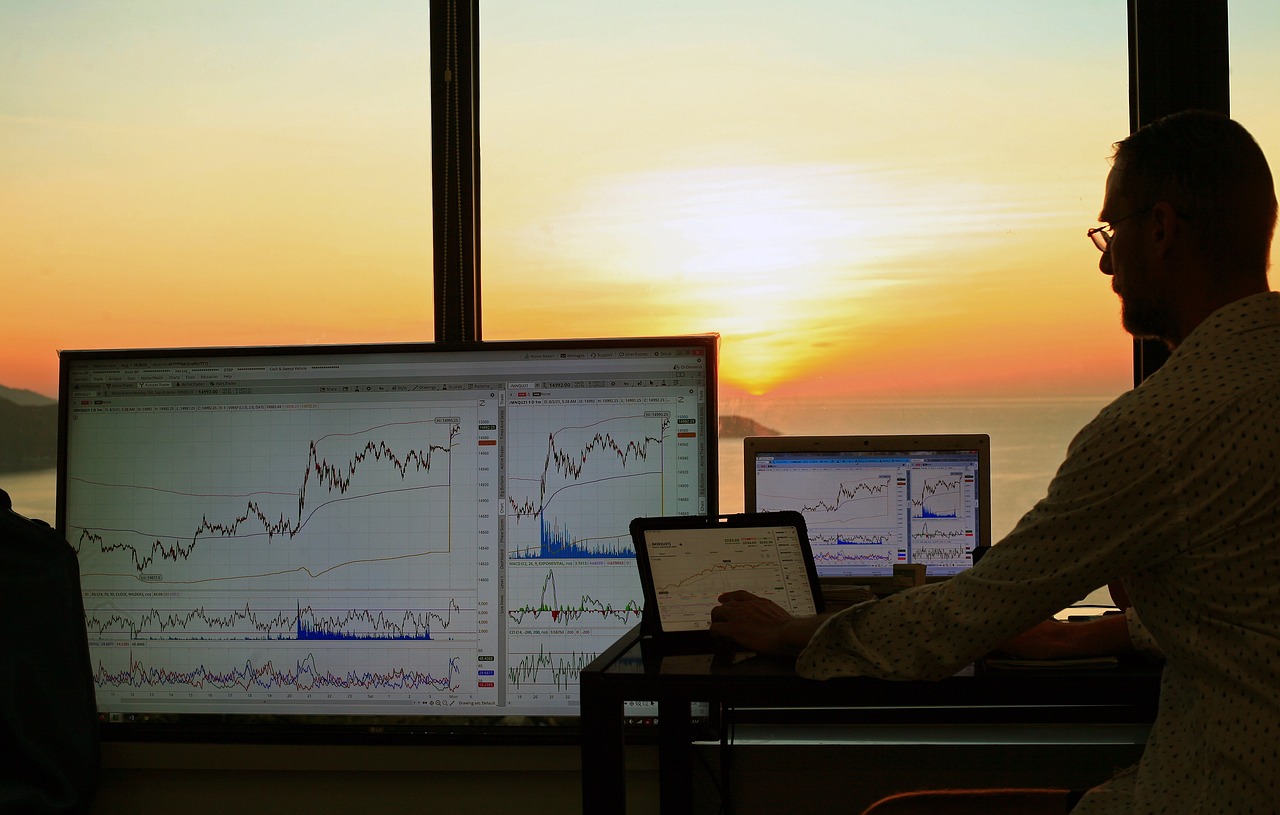
Smart Contracts and Automation
In the realm of decentralized prediction markets, smart contracts serve as the backbone of automation, transforming the way trades and payouts are executed. But what exactly are smart contracts? Simply put, they are self-executing contracts with the terms of the agreement directly written into code. Imagine them as digital vending machines: you put in your money (or data), select your item (or trade), and the machine automatically delivers your choice without the need for a cashier. This level of automation not only enhances efficiency but also minimizes the need for intermediaries, which can often slow down transactions.
One of the most significant advantages of smart contracts is their ability to operate on blockchain technology. This ensures that once the conditions are met, the contract executes automatically and transparently. For instance, if you bet on a sports event outcome, the smart contract will automatically distribute winnings to the correct participants based on the final score, without any human intervention. This reliability is crucial in maintaining trust among users in decentralized prediction markets.
However, while smart contracts offer remarkable benefits, they are not without their challenges. Coding errors can lead to unintended consequences, and the accuracy of data feeds is vital for the proper functioning of these contracts. If a smart contract relies on an inaccurate data source, it could execute based on faulty information, leading to disputes and loss of trust. Thus, while the automation provided by smart contracts is a game-changer, it’s essential to ensure that these systems are designed with precision and backed by reliable data.
To summarize the role of smart contracts in decentralized prediction markets, consider the following key points:
- Efficiency: Automates trades and payouts, speeding up the process.
- Trust: Operates on blockchain, ensuring transparency and immutability.
- Risk: Vulnerable to coding errors and reliant on accurate data feeds.
In conclusion, the integration of smart contracts into decentralized prediction markets not only streamlines operations but also brings forth new challenges that need to be addressed. As these technologies continue to evolve, understanding their implications will be crucial for participants looking to navigate this exciting landscape.
- What are smart contracts?
Smart contracts are self-executing contracts with the terms directly written into code, allowing for automated transactions without intermediaries.
- How do smart contracts enhance prediction markets?
They automate trades and payouts, ensuring efficiency and transparency, which builds trust among users.
- What are the risks associated with smart contracts?
Coding errors and reliance on accurate data feeds can lead to incorrect executions and disputes.

Benefits of Smart Contracts
Smart contracts are revolutionizing the way we conduct transactions in decentralized prediction markets. Imagine a world where you can make a bet on the outcome of a sporting event, and the moment the final whistle blows, your winnings are automatically transferred to your wallet without any manual intervention. This is the power of smart contracts. They are self-executing contracts with the terms of the agreement directly written into code, allowing for a seamless and efficient transaction experience.
One of the most significant benefits of smart contracts is their ability to minimize human error. In traditional markets, errors can occur during the execution of trades due to miscommunication or oversight. However, with smart contracts, the code dictates the terms, and as long as the code is correctly written, the execution will occur as intended. This precision not only streamlines operations but also instills a sense of confidence among users. When participants know that the contract will execute exactly as programmed, they are more likely to engage actively in the market.
Moreover, smart contracts enhance security by eliminating the need for intermediaries. In conventional prediction markets, brokers or third parties often facilitate trades, which can introduce vulnerabilities and increase the risk of fraud. With decentralized prediction markets powered by blockchain technology, transactions are trustless, meaning that participants do not need to rely on a central authority. Instead, they can trust the underlying technology to manage their trades securely.
Additionally, smart contracts facilitate transparency. Every transaction recorded on the blockchain is visible to all participants, ensuring that everyone has access to the same information. This transparency helps to build trust within the market, as users can independently verify the outcomes of events and the execution of trades. In a decentralized environment, where anonymity is prevalent, this level of openness is crucial for maintaining market integrity.
To summarize, the benefits of smart contracts in decentralized prediction markets include:
- Minimized Human Error: Automated execution reduces the chances of mistakes.
- Enhanced Security: Eliminates the need for intermediaries, reducing fraud risks.
- Increased Transparency: All transactions are recorded on the blockchain, accessible to all participants.
In conclusion, smart contracts are not just a technological innovation; they are a game-changer for decentralized prediction markets. By providing a framework for secure, transparent, and efficient transactions, they empower users and foster a more robust trading environment. As these technologies continue to evolve, we can expect even greater advancements that will enhance user experience and market reliability.
Q: What are smart contracts?
A: Smart contracts are self-executing contracts with the terms written directly into code, allowing for automated transactions without intermediaries.
Q: How do smart contracts enhance security?
A: By eliminating the need for intermediaries, smart contracts reduce the risk of fraud and ensure that transactions are executed as intended.
Q: Can smart contracts be modified after deployment?
A: Generally, smart contracts are immutable once deployed to the blockchain, which means they cannot be changed. It is crucial to ensure that the code is correct before deployment.
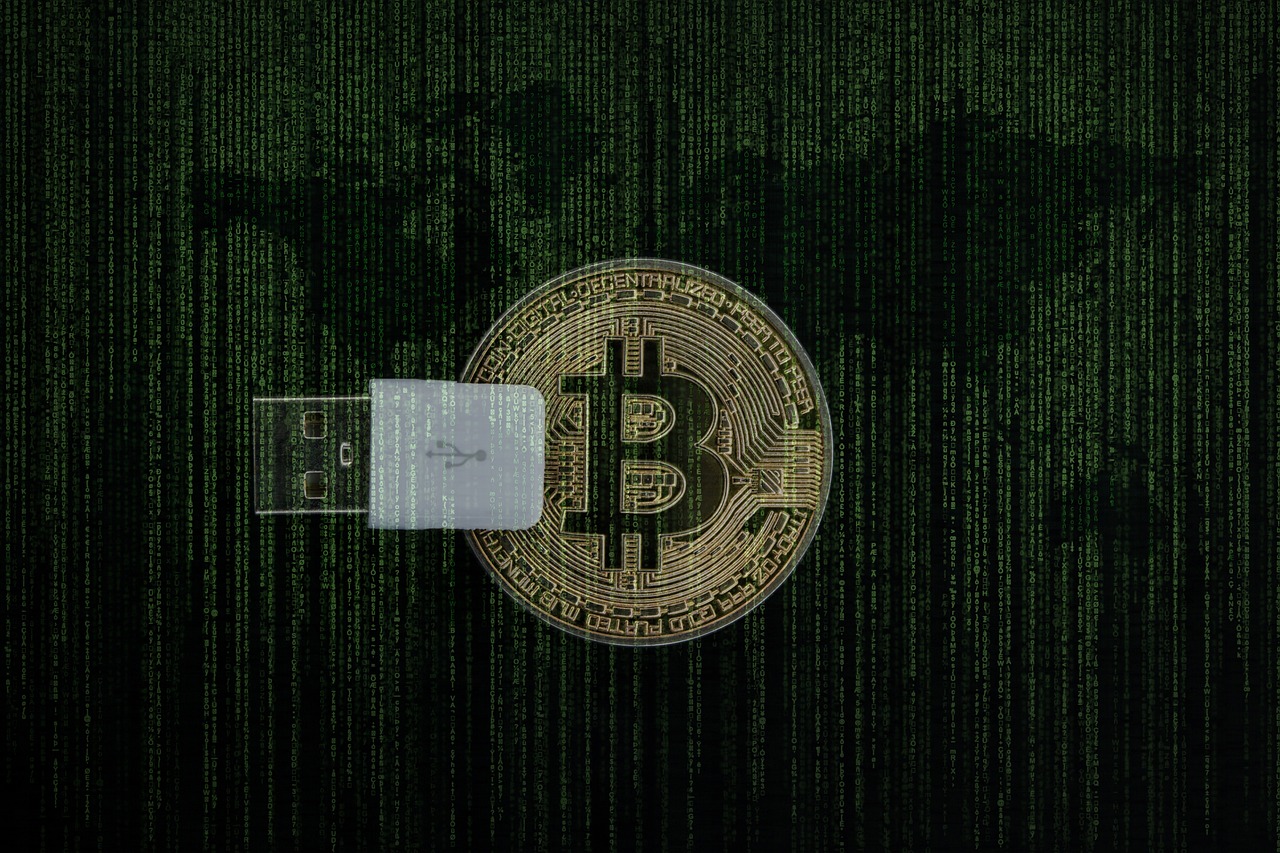
Challenges of Smart Contracts
While smart contracts are revolutionizing the way transactions are executed in decentralized prediction markets, they are not without their challenges. One of the primary concerns is the potential for coding errors. Smart contracts are essentially lines of code that dictate how a transaction should proceed. If there’s a bug or a logical flaw in the code, it can lead to unintended consequences that might jeopardize the entire market. Imagine a scenario where a prediction market is set up to forecast the outcome of an election, but due to a coding oversight, the payouts are sent to the wrong addresses. Such errors can lead to significant financial losses and diminish trust in the platform.
Another challenge is the reliance on external data feeds, known as oracles. Smart contracts often need information from outside their blockchain environment to execute properly. For instance, if a prediction market is based on the outcome of a sporting event, the smart contract requires accurate data from a reliable source. If the oracle providing this information fails or is compromised, it can result in incorrect payouts or disputes among participants. This dependency on external data introduces a layer of risk that can affect the overall reliability of the market.
Additionally, the lack of legal recourse can pose a significant challenge. Traditional contracts are enforceable in a court of law, providing a safety net for parties involved. However, smart contracts operate on a decentralized network where legal frameworks are still evolving. If a dispute arises, participants might find themselves without a clear path to resolution, leading to frustration and a lack of confidence in the system. This uncertainty can deter potential users from engaging in decentralized prediction markets, impacting their growth and adoption.
Moreover, there’s the issue of security vulnerabilities. While blockchain technology is known for its robust security features, smart contracts can still be susceptible to various attacks. Hackers may exploit vulnerabilities to manipulate outcomes or steal funds. High-profile incidents in the past have shown that even well-audited smart contracts can fall prey to sophisticated attacks. This ongoing threat necessitates rigorous security audits and constant vigilance, which can be resource-intensive for developers.
In summary, while smart contracts offer numerous advantages in the realm of decentralized prediction markets, they also come with inherent challenges that must be addressed. From coding errors and reliance on external data to legal ambiguities and security vulnerabilities, these issues highlight the need for continued innovation and improvement in smart contract technology. As the ecosystem matures, solutions will likely emerge to mitigate these challenges, paving the way for a more secure and reliable market environment.
- What are smart contracts? Smart contracts are self-executing contracts with the terms of the agreement directly written into code, allowing for automated transactions without intermediaries.
- How do smart contracts ensure security? Smart contracts operate on blockchain technology, which is inherently secure and transparent, but they can still be vulnerable to coding errors and external attacks.
- What is an oracle in the context of smart contracts? An oracle is a service that provides external data to smart contracts, enabling them to execute based on real-world information.
- Can I resolve disputes in decentralized prediction markets? Currently, resolving disputes can be challenging due to the lack of established legal frameworks for smart contracts, making it essential to choose reliable platforms.
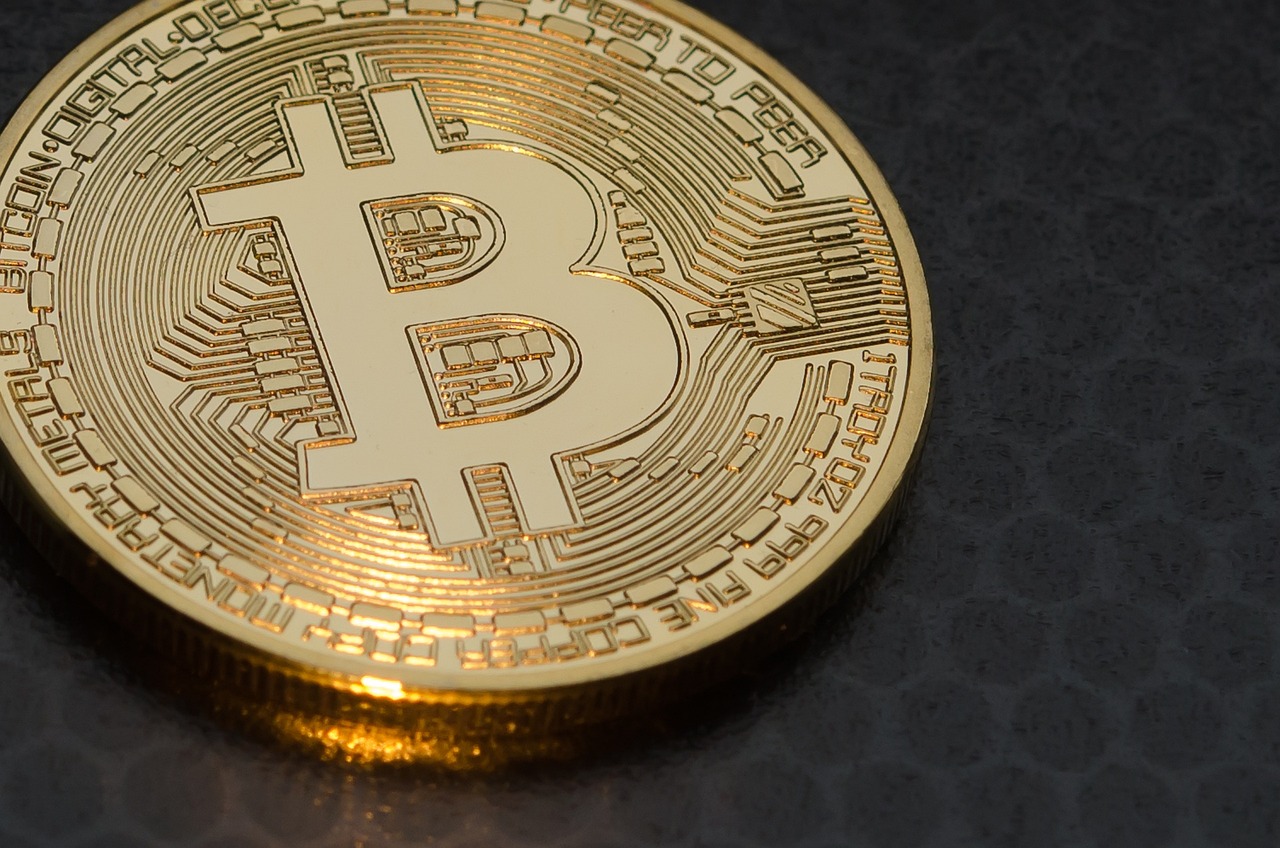
Market Dynamics and User Participation
Market dynamics in decentralized prediction markets are fascinating, as they revolve around the collective intelligence of participants. Imagine a bustling marketplace where every voice matters, and every opinion contributes to the overall forecast of future events. In these markets, users can buy and sell shares based on their predictions of outcomes, which means that the more diverse the participants, the more accurate the predictions tend to be. This phenomenon can be likened to a well-tuned orchestra, where each instrument plays its part to create a harmonious sound. In this case, the instruments are the opinions and insights of individual traders, and the music is the collective prediction of an event's outcome.
Active participation is critical for the health of these markets. When a wide array of users, from casual participants to seasoned traders, engage in trading, it leads to increased liquidity. Liquidity is essential because it allows for smoother transactions and more reliable price discovery. Without sufficient participation, the market can become stagnant, resembling a quiet pond rather than a lively river. Therefore, fostering an environment where users feel encouraged to share their insights and predictions is paramount.
Moreover, the design of decentralized prediction markets often incorporates gamification elements, which can significantly boost user engagement. For instance, platforms might offer rewards for accurate predictions or create leaderboards to recognize top traders. This not only makes participation more enjoyable but also incentivizes users to contribute their knowledge and expertise. Just like in a game, where players strive for high scores, users in prediction markets are motivated by the thrill of competition and the potential for financial gain.
To further understand the dynamics at play, let’s take a look at some key factors that influence user participation:
| Factor | Description |
|---|---|
| Incentives | Rewards for accurate predictions can drive participation. |
| User Interface | An intuitive interface makes it easier for users to engage. |
| Community Engagement | Active forums and discussions can enhance user involvement. |
| Market Reputation | A trustworthy platform attracts more participants. |
Ultimately, the success of decentralized prediction markets hinges on the interplay between market dynamics and user participation. As more individuals recognize the potential of these platforms, we can expect to see a vibrant ecosystem where predictions are not only made but also celebrated. In this era of digital innovation, understanding how to harness collective intelligence will be key to unlocking the full potential of prediction markets.
- What are decentralized prediction markets?
Decentralized prediction markets are platforms that allow users to trade shares based on the outcomes of future events, leveraging blockchain technology for transparency and security.
- How do I participate in a decentralized prediction market?
To participate, you typically need to create an account on a prediction market platform, fund your account with cryptocurrency, and then you can start trading shares on various events.
- What are the risks associated with decentralized prediction markets?
Some risks include regulatory scrutiny, market manipulation, and potential technological vulnerabilities that could affect the reliability of the markets.
- Can I trust the predictions made in these markets?
While decentralized prediction markets can provide valuable insights, it’s essential to approach them with caution, as predictions are based on user opinions and can be influenced by various factors.

Advantages of Decentralized Prediction Markets
Decentralized prediction markets are quickly gaining traction, and it's not hard to see why. They offer a plethora of advantages that traditional prediction markets simply can't match. One of the most notable benefits is increased accessibility. Imagine being able to participate in a market that doesn't restrict you based on where you live or your financial status. With just an internet connection, anyone can dive into the world of prediction markets, making it an inclusive platform for all. This democratization of information fosters a diverse pool of opinions, which can lead to more accurate predictions.
Another significant advantage is the reduction in transaction costs. Traditional markets often come with hefty fees that can deter even the most enthusiastic traders. In contrast, decentralized platforms typically operate with lower fees, allowing users to engage in frequent trading without the fear of losing a chunk of their profits to intermediary costs. This affordability makes decentralized prediction markets attractive not just for seasoned traders but also for casual participants who wish to explore their predictive abilities without breaking the bank.
Moreover, enhanced privacy is a hallmark of decentralized prediction markets. In a world where data breaches and privacy concerns are rampant, the anonymity offered by these platforms is a breath of fresh air. Participants can engage in trading without worrying about their personal information being sold or misused. This privacy fosters a sense of security and encourages more people to join in, further enriching the market with diverse perspectives.
To illustrate these advantages, consider the following table that compares traditional prediction markets with decentralized ones:
| Feature | Traditional Prediction Markets | Decentralized Prediction Markets |
|---|---|---|
| Accessibility | Limited by geographic and financial barriers | Open to anyone with internet access |
| Transaction Costs | High fees for trades | Lower fees, making trading more affordable |
| Privacy | Requires personal information | Offers anonymity to users |
In addition to these advantages, decentralized prediction markets also benefit from the transparency that blockchain technology provides. Every transaction is recorded on a public ledger, ensuring that all participants can verify the outcomes and the integrity of the market. This level of transparency not only builds trust among users but also deters fraudulent activities, making the market more stable and reliable.
Overall, the advantages of decentralized prediction markets are compelling. They provide a more inclusive, cost-effective, and private alternative to traditional markets, paving the way for a new era of forecasting and collective intelligence. As more individuals recognize these benefits, we can expect to see a surge in participation, leading to richer data and more accurate predictions across various sectors.
- What are decentralized prediction markets? Decentralized prediction markets are platforms that allow users to buy and sell shares in the outcomes of future events using blockchain technology.
- How do I participate in a decentralized prediction market? All you need is an internet connection and a compatible cryptocurrency wallet to start trading.
- Are decentralized prediction markets legal? The legality varies by jurisdiction, so it's essential to check local regulations before participating.
- What are the risks associated with decentralized prediction markets? Risks include regulatory scrutiny, market manipulation, and technological vulnerabilities.

Accessibility and Inclusivity
Decentralized prediction markets are revolutionizing the way we think about participation in financial ecosystems. Imagine a world where anyone, regardless of their background or location, can join the conversation about future events. This is exactly what these markets are doing. They are breaking down barriers and democratizing access to information and financial opportunities. Now, anyone with an internet connection can dive into the world of prediction markets, participating in discussions about everything from sports outcomes to political elections.
The beauty of decentralized systems lies in their inherent accessibility. Traditional prediction markets often require significant capital or are limited to specific geographic areas, creating a barrier to entry for many potential participants. In contrast, decentralized platforms welcome a diverse range of users. This inclusivity not only enriches the market with varied perspectives but also enhances the accuracy of predictions. Just think about it: when a multitude of voices can weigh in on an outcome, the collective intelligence becomes a formidable force.
Moreover, the user-friendly design of many decentralized prediction markets ensures that even those who are not tech-savvy can navigate the platforms with ease. With intuitive interfaces and straightforward processes, users can quickly learn how to buy and sell shares in various outcomes. This ease of use is crucial, as it encourages more people to participate, creating a vibrant community of traders and forecasters.
To illustrate this point further, consider the following table that highlights the differences in accessibility between traditional and decentralized prediction markets:
| Feature | Traditional Prediction Markets | Decentralized Prediction Markets |
|---|---|---|
| Geographic Restrictions | Often limited to specific countries | Available globally |
| Minimum Investment | High minimums often required | Low or no minimum investment |
| User Interface | Complex and often confusing | Intuitive and user-friendly |
| Participation Fees | High transaction fees | Lower fees, often negligible |
As we can see, the advantages of decentralized prediction markets are significant. They not only offer lower barriers to entry but also foster a sense of community among users. When people from different walks of life come together to share their insights and predictions, the potential for accurate forecasting increases exponentially.
In conclusion, the accessibility and inclusivity of decentralized prediction markets are game-changers. By allowing anyone with an internet connection to participate, these markets are not just predicting the future; they're creating a collaborative space where diverse opinions can thrive. As we continue to witness the evolution of this technology, we can only imagine the exciting possibilities that lie ahead.
- What are decentralized prediction markets? Decentralized prediction markets are platforms that allow users to buy and sell shares in the outcomes of future events, leveraging blockchain technology for transparency and security.
- How do I participate in a decentralized prediction market? To participate, you simply need an internet connection and a cryptocurrency wallet. Most platforms have user-friendly interfaces that guide you through the process.
- Are there risks involved in using decentralized prediction markets? Yes, while there are many benefits, risks include regulatory scrutiny, potential market manipulation, and technological vulnerabilities.
- Can anyone participate in these markets? Absolutely! Decentralized prediction markets are open to anyone with an internet connection, promoting inclusivity and accessibility.

Lower Transaction Costs
When it comes to engaging in prediction markets, one of the most appealing aspects is the significantly associated with decentralized platforms. Unlike traditional prediction markets that often impose hefty fees for trades, decentralized platforms leverage blockchain technology to minimize these costs. This is akin to shopping at a local farmer's market versus a large supermarket; while both provide goods, the local market often offers fresher options at a better price due to reduced overheads.
In a decentralized prediction market, the absence of intermediaries means that participants can trade directly with each other. This direct interaction eliminates the need for centralized entities that typically charge fees for their services. As a result, users can enjoy lower fees on trades, withdrawals, and deposits, allowing them to maximize their returns. For instance, consider the following comparison:
| Market Type | Average Transaction Fee | Average Withdrawal Fee |
|---|---|---|
| Traditional Prediction Market | 5% - 10% | $5 - $10 |
| Decentralized Prediction Market | 0.5% - 2% | Minimal ($0 - $2) |
As illustrated in the table, the difference in transaction costs can be staggering. This lower cost structure not only attracts frequent traders but also encourages casual participants to explore prediction markets without the fear of losing a significant portion of their investment to fees. Furthermore, the reduced costs contribute to a more vibrant trading environment, fostering greater liquidity and participation.
Ultimately, lower transaction costs democratize access to prediction markets, allowing a diverse range of users to engage without the burden of excessive fees. This inclusivity is crucial for the growth of decentralized platforms, as it cultivates a community of traders who can share insights and predictions, enhancing the overall accuracy of market outcomes. So, whether you're a seasoned trader or a curious newcomer, the affordability of decentralized prediction markets makes them an attractive option worth exploring.
- What are decentralized prediction markets?
Decentralized prediction markets are platforms that allow users to bet on the outcomes of future events using blockchain technology, ensuring transparency and security.
- How do transaction costs compare to traditional markets?
Transaction costs in decentralized markets are significantly lower, often due to the absence of intermediaries, which reduces fees for trades and withdrawals.
- Are decentralized prediction markets safe?
While they offer advantages like transparency, they also come with risks such as market manipulation and regulatory scrutiny. Users should conduct thorough research before participating.
- Can anyone participate in decentralized prediction markets?
Yes! Anyone with an internet connection can participate, making these markets more accessible than traditional ones.

Challenges and Risks
While the world of decentralized prediction markets is bursting with potential, it is not without its challenges and risks. Just like any emerging technology, these markets face hurdles that could impact their adoption and overall effectiveness. One of the most pressing issues is regulatory scrutiny. Governments around the globe are beginning to take a closer look at decentralized platforms, often with a wary eye. This scrutiny can lead to regulations that may stifle innovation or complicate the operational landscape for these markets. Imagine trying to navigate through a maze where the walls keep shifting; that’s what it can feel like for developers and users alike in a rapidly changing regulatory environment.
Another significant risk is market manipulation. The anonymity that decentralized platforms provide can be a double-edged sword. While it promotes privacy, it also opens the door for unscrupulous individuals to engage in practices that can distort market outcomes. For example, a small group of users could collude to influence the price of certain outcomes, creating an illusion of consensus that doesn’t reflect the actual market sentiment. This kind of manipulation can undermine trust and drive away genuine participants, leading to a vicious cycle of diminishing liquidity and increasing skepticism.
Moreover, technological vulnerabilities pose another layer of risk. The very systems that make decentralized prediction markets appealing—like blockchain and smart contracts—are still relatively new and can be susceptible to bugs and exploits. A poorly coded smart contract could lead to significant financial losses, not just for individual traders but for the entire platform. Just as a house built on shaky foundations is likely to collapse, so too can a prediction market built on flawed technology. Therefore, ensuring robust coding practices and rigorous testing is essential for the sustainability of these platforms.
In summary, while decentralized prediction markets offer exciting opportunities, they also come with a unique set of challenges. Addressing these issues will be critical for the growth and acceptance of these markets. Stakeholders must work together to create a safe and reliable environment that can withstand scrutiny and foster trust among users.
- What are decentralized prediction markets? Decentralized prediction markets are platforms that allow users to trade shares in the outcomes of future events, leveraging collective intelligence to forecast results.
- How do smart contracts work in prediction markets? Smart contracts automate the execution of trades and payouts, reducing the need for intermediaries and enhancing efficiency.
- What are the main risks associated with decentralized prediction markets? Key risks include regulatory scrutiny, market manipulation, and technological vulnerabilities.
- Can anyone participate in decentralized prediction markets? Yes, anyone with an internet connection can participate, making these markets more accessible compared to traditional ones.

Regulatory Concerns
The rise of decentralized prediction markets has not gone unnoticed by regulatory bodies around the world. As these platforms gain popularity, they also attract scrutiny, raising numerous that could shape their future. One of the primary issues is that these markets operate in a legal gray area, where existing laws may not adequately cover the unique characteristics of blockchain technology and decentralized finance.
Governments are increasingly aware of the potential for market manipulation and fraud in decentralized systems. Unlike traditional markets, where regulatory frameworks have been established to protect investors and ensure fair play, decentralized platforms often lack oversight. This absence of regulation can lead to a variety of issues, including the exploitation of loopholes, insider trading, and the dissemination of misleading information. As a result, regulatory bodies are contemplating how to implement guidelines that can both foster innovation and protect consumers.
Another significant concern is the tax implications associated with trading in decentralized prediction markets. Many participants may not fully understand their tax obligations, leading to potential non-compliance. For instance, gains from trading could be subject to capital gains tax, but the lack of clear regulations makes it difficult for users to navigate these waters. This uncertainty can deter individuals from participating in these markets, stifling growth and innovation.
Moreover, the international nature of decentralized prediction markets complicates regulatory efforts. A platform operating in one jurisdiction may have users from around the globe, each subject to different laws and regulations. This disparity can create challenges for compliance, as platforms may find it difficult to adhere to the varying legal requirements of different countries. Consequently, some platforms may opt to restrict access based on geographic location, limiting the inclusivity that decentralized markets strive to offer.
In light of these concerns, many industry players advocate for a balanced approach to regulation—one that encourages innovation while ensuring that participants are protected. This could involve establishing clear guidelines for the operation of decentralized platforms, implementing Know Your Customer (KYC) protocols, and promoting transparency in transactions. By fostering a regulatory environment that supports responsible growth, decentralized prediction markets can thrive without sacrificing the principles of decentralization and user autonomy.
In conclusion, while decentralized prediction markets hold tremendous potential, navigating the regulatory landscape will be crucial for their long-term success. As stakeholders engage in ongoing discussions with regulators, the future of these markets will likely hinge on finding common ground that allows for innovation while safeguarding users and maintaining market integrity.
- What are decentralized prediction markets? Decentralized prediction markets are platforms that allow users to buy and sell shares in the outcomes of future events, leveraging blockchain technology for transparency and security.
- How do regulatory concerns affect prediction markets? Regulatory concerns can lead to restrictions on market operations, affect user participation, and create uncertainty regarding compliance, which can hinder growth.
- What role do smart contracts play in prediction markets? Smart contracts automate transactions and payouts, reducing the need for intermediaries and enhancing efficiency, while also minimizing human error.
- Are decentralized prediction markets safe to use? While they offer benefits like privacy and lower fees, users should be aware of potential risks such as market manipulation and regulatory scrutiny.
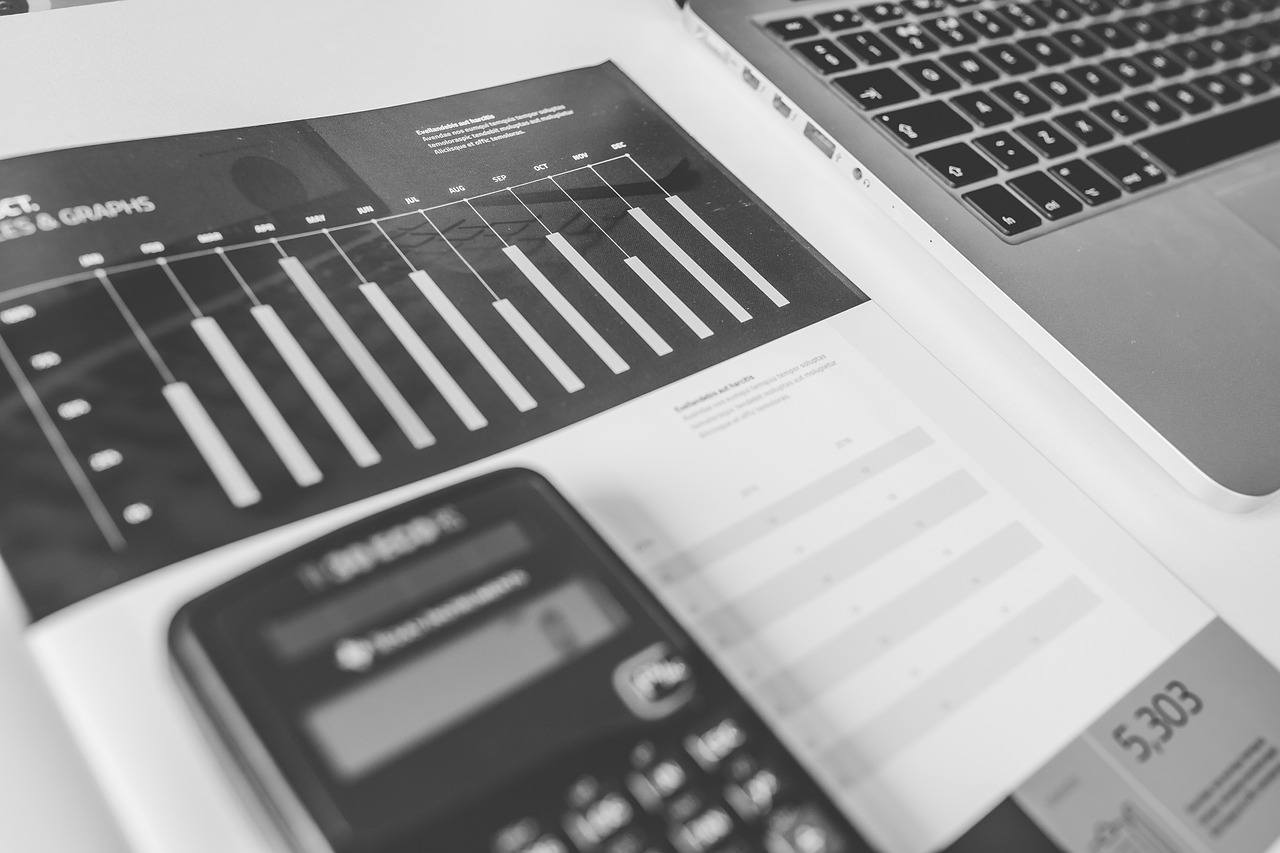
Market Manipulation Risks
In the realm of decentralized prediction markets, the potential for market manipulation looms large, casting a shadow over the otherwise exciting prospects these platforms offer. The very nature of these markets, which thrive on the anonymity of participants, can inadvertently create fertile ground for unscrupulous actors. Imagine a bustling marketplace where everyone wears a mask; while it may seem thrilling, it also opens the door for mischief and deceit. So, what does this mean for everyday users and the integrity of the market?
One of the primary concerns is that individuals with insider knowledge or substantial resources can exploit their advantages to sway outcomes in their favor. For instance, consider a scenario where a trader with advanced knowledge of an event's outcome places a large bet on a specific result. This action could influence other traders, leading them to believe that the outcome is more likely than it truly is. As a result, the market can become skewed, reflecting artificial prices rather than genuine predictions. This phenomenon is often referred to as whale manipulation, where large holders of assets can significantly impact market dynamics.
Furthermore, the lack of regulatory oversight in decentralized prediction markets presents another layer of risk. Without a governing body to enforce rules and monitor activities, it becomes increasingly challenging to detect and prevent manipulative practices. The anonymity that attracts users to these platforms can also serve as a double-edged sword; while it enhances privacy, it simultaneously allows bad actors to operate without fear of repercussions. This creates an environment where fraudulent behavior can thrive, potentially leading to a loss of trust among genuine participants.
To mitigate these risks, several decentralized platforms are exploring innovative solutions. For instance, some are implementing advanced algorithms that analyze trading patterns and detect anomalies that may indicate manipulation. Additionally, community governance models are being adopted, allowing users to vote on rules and regulations that promote fair play. By fostering a sense of ownership and accountability, these platforms aim to create a more transparent and secure trading environment.
In conclusion, while the risks of market manipulation in decentralized prediction markets are significant, they are not insurmountable. By leveraging technology and community engagement, these platforms can work towards minimizing the threats posed by bad actors. As users become more aware of these challenges, they can take proactive steps to protect themselves, ensuring that the promise of decentralized prediction markets remains intact.
- What are decentralized prediction markets?
Decentralized prediction markets are platforms where individuals can buy and sell shares in the outcomes of future events, utilizing blockchain technology for transparency and security. - How does market manipulation occur in these markets?
Market manipulation can occur when individuals with insider knowledge influence trading behavior, leading to artificial price movements and skewed predictions. - What can be done to prevent market manipulation?
Platforms can implement algorithms to detect anomalies, enhance community governance, and promote transparency to mitigate manipulation risks. - Are decentralized prediction markets regulated?
Currently, many decentralized prediction markets operate without strict regulatory oversight, which can pose risks but also allows for greater flexibility and innovation.
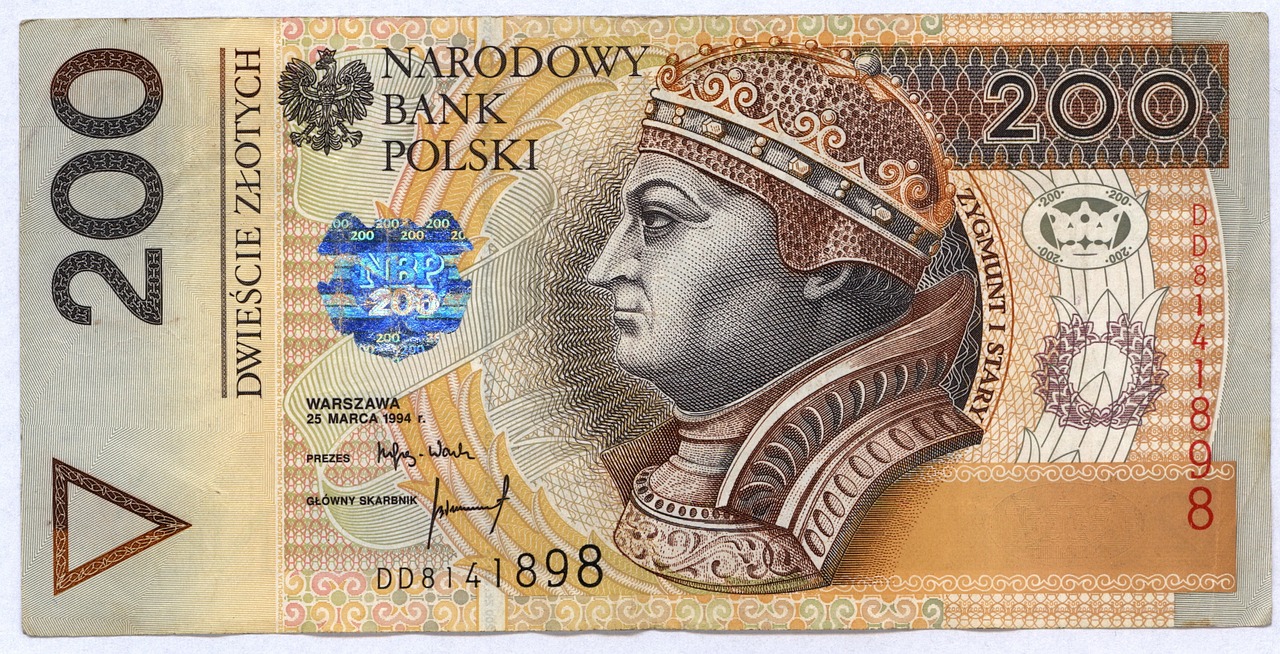
Future Trends in Decentralized Prediction Markets
The landscape of decentralized prediction markets is evolving at a breakneck speed, and it's fascinating to consider where we might be headed. As technology continues to advance, we can expect these platforms to become more integrated with other innovations, significantly enhancing their functionality and user experience. One of the most exciting trends on the horizon is the potential for integration with decentralized finance (DeFi). This intersection could create new financial instruments that leverage the predictive capabilities of these markets, offering users a richer tapestry of investment opportunities. Imagine being able to hedge bets not just on election outcomes but also on stock prices, weather events, or even sports results—all in a seamless, decentralized ecosystem.
Moreover, as awareness of decentralized prediction markets grows, we could see them expanding into new industries that have traditionally relied on less transparent methods of forecasting. For instance, sectors like healthcare and climate forecasting could benefit immensely from the data-driven decision-making tools that these markets provide. In healthcare, prediction markets could help gauge the likelihood of successful treatments or the spread of diseases, enabling better resource allocation and public health strategies. Similarly, in climate science, they could offer insights into future weather patterns, helping communities prepare for natural disasters more effectively.
Another trend that cannot be overlooked is the increasing demand for user-friendly interfaces and enhanced user experience. As more people become aware of decentralized prediction markets, the platforms will need to cater to a broader audience, including those who may not be tech-savvy. This means simplifying processes, improving the design, and providing educational resources to help users navigate the platforms with ease. The goal is to make participation as straightforward as possible, ensuring that anyone with an internet connection can engage without feeling intimidated.
Furthermore, as these markets mature, we may witness a shift towards greater collaboration among platforms. Instead of competing in isolation, decentralized prediction market platforms might start to share data and insights, creating a more cohesive ecosystem. This collaboration could lead to the development of standardized protocols and APIs that allow for better interoperability, ultimately enhancing the overall market experience.
Lastly, we must consider the role of regulatory frameworks in shaping the future of decentralized prediction markets. As governments around the world begin to take notice, they may implement regulations that could either support or stifle innovation. Navigating this regulatory landscape will be crucial for the sustainability of these markets. Engaging with regulators proactively and ensuring compliance while advocating for user rights will be paramount. The future is bright, but it will require careful navigation to harness the full potential of decentralized prediction markets.
- What are decentralized prediction markets?
Decentralized prediction markets are platforms where individuals can buy and sell shares in the outcomes of future events, leveraging collective intelligence to forecast results. - How does blockchain technology enhance prediction markets?
Blockchain ensures transparency, security, and immutability, allowing for trustless transactions between participants. - What role do smart contracts play?
Smart contracts automate trades and payouts, reducing the need for intermediaries and minimizing the chances of human error. - What are the risks associated with decentralized prediction markets?
Risks include regulatory scrutiny, market manipulation, and technological vulnerabilities that can impact reliability.

Integration with DeFi
The integration of decentralized prediction markets with decentralized finance (DeFi) is a match made in blockchain heaven. Imagine a world where you can not only predict the outcome of events but also leverage those predictions to create financial instruments that can earn you yield. This is precisely what the convergence of these two innovations promises. By merging prediction markets with DeFi protocols, users can engage in a new realm of opportunities that enhance both the functionality and profitability of their investments.
One of the most exciting aspects of this integration is the potential for creating synthetic assets. These assets can be designed to represent the probability of certain outcomes, allowing traders to buy and sell based on their predictions. For instance, if you believe that a particular political candidate will win an upcoming election, you could trade a synthetic asset that reflects that probability. This creates a dynamic market where the value of these assets fluctuates based on collective sentiment and real-world events.
Moreover, the use of liquidity pools in DeFi can significantly enhance the liquidity of prediction markets. By allowing users to contribute to these pools, participants can earn rewards while also ensuring that there are enough funds available for trading. This not only incentivizes participation but also helps stabilize the market, making it more attractive to users who might be hesitant to dive into a less liquid environment.
Another important aspect is the role of yield farming in this ecosystem. Users can stake their assets in prediction markets and earn returns based on the market's performance. This creates a win-win situation where users can benefit from both the accuracy of their predictions and the financial rewards from DeFi protocols. Just think of it as planting seeds in a garden; the more you nurture your investments, the more fruitful your harvest will be!
However, it's essential to recognize that this integration also comes with its challenges. The complexity of combining these two systems can lead to potential vulnerabilities, such as smart contract risks and the need for robust data feeds. If the underlying data that drives the predictions is inaccurate or manipulated, it could lead to significant losses for traders. Therefore, ensuring that reliable data sources are in place is crucial for the success of these integrated platforms.
In summary, the integration of decentralized prediction markets with DeFi is set to revolutionize how we engage with both prediction and finance. As these technologies continue to evolve, we can expect to see innovative products and services emerge, providing users with unprecedented opportunities for profit and participation. Just like the early days of the internet, we are on the brink of a new frontier, and those who are willing to explore it may find themselves at the forefront of a financial revolution.
- What are decentralized prediction markets?
Decentralized prediction markets are platforms where individuals can buy and sell shares in the outcomes of future events, using blockchain technology to ensure transparency and security. - How does integration with DeFi enhance prediction markets?
Integration with DeFi allows for the creation of synthetic assets, liquidity pools, and yield farming opportunities, enhancing the functionality and profitability of prediction markets. - What are the risks associated with decentralized prediction markets?
Risks include regulatory scrutiny, market manipulation, and vulnerabilities related to smart contracts and data accuracy.

Expansion into New Industries
The future of decentralized prediction markets is incredibly promising, especially as they begin to expand into new industries that were previously untouched by such innovative financial instruments. Imagine a world where you could predict not just sporting events or political elections, but also critical outcomes in sectors like healthcare and climate science! This is not just a fantasy; it is quickly becoming a reality. As awareness of these markets grows, so too does their potential to provide valuable insights and data-driven decision-making tools across various fields.
In the healthcare industry, for instance, decentralized prediction markets could revolutionize how we approach medical research and patient outcomes. By allowing participants to buy and sell shares in the likelihood of certain medical breakthroughs or treatment effectiveness, researchers could gain access to a wealth of collective intelligence. This would not only expedite the research process but also enhance the accuracy of predictions related to drug efficacy and patient responses. For example, if a new drug is being tested, participants could speculate on its success based on a variety of factors, including clinical trial results and historical data. Such a system could lead to a more efficient allocation of resources and funding, ultimately benefiting patients and healthcare providers alike.
Moreover, the climate forecasting sector stands to gain immensely from decentralized prediction markets. As climate change continues to pose significant challenges globally, the ability to predict weather patterns, natural disasters, and environmental changes becomes increasingly crucial. By leveraging the power of collective insights, these markets could provide more accurate forecasts, helping governments, businesses, and individuals make informed decisions. For example, if a prediction market indicates a high likelihood of a severe drought, farmers could adjust their planting strategies accordingly, potentially saving crops and resources.
As these markets expand into new industries, they will not only diversify the types of predictions available but also attract a wider range of participants. This increased engagement can lead to enhanced market liquidity, which is essential for the overall health of any trading platform. The more participants there are, the more accurate the predictions become, creating a feedback loop that benefits everyone involved.
However, this expansion does not come without its challenges. As decentralized prediction markets venture into these new territories, they will need to navigate complex regulatory landscapes and ensure that they are providing accurate and reliable data. Collaboration with industry experts and stakeholders will be vital in overcoming these hurdles. By building robust frameworks that address potential risks, decentralized prediction markets can pave the way for a future where informed decision-making is at the forefront of various industries.
- What are decentralized prediction markets?
Decentralized prediction markets are platforms that allow users to buy and sell shares in the outcomes of future events, utilizing blockchain technology to ensure transparency and security. - How do prediction markets work?
Participants trade shares based on their predictions, and the market prices reflect the collective beliefs about the likelihood of various outcomes. - What industries can benefit from decentralized prediction markets?
Industries such as healthcare, climate forecasting, finance, and entertainment can leverage these markets for better data-driven decision-making. - What are the risks associated with decentralized prediction markets?
Challenges include regulatory scrutiny, market manipulation, and the reliability of data feeds used in the markets.
Frequently Asked Questions
- What are decentralized prediction markets?
Decentralized prediction markets are platforms that allow individuals to buy and sell shares in the outcomes of future events, leveraging collective intelligence to forecast results. Unlike traditional markets, these operate on blockchain technology, ensuring transparency and security.
- How does blockchain technology enhance prediction markets?
Blockchain technology provides a secure and transparent framework for decentralized prediction markets. It ensures that all transactions are immutable and verifiable, which builds trust among participants and reduces the risk of fraud.
- What role do smart contracts play in these markets?
Smart contracts are self-executing contracts with the terms of the agreement directly written into code. They automate trade executions and payouts, minimizing the need for intermediaries and enhancing efficiency, which ultimately boosts user confidence.
- What are the benefits of using smart contracts?
Smart contracts reduce human error and eliminate fraud by ensuring that transactions are executed exactly as programmed. This level of automation increases reliability and trust in the prediction market.
- What challenges do decentralized prediction markets face?
Despite their advantages, these markets encounter challenges like regulatory scrutiny, potential market manipulation, and technological vulnerabilities. Ensuring accurate data feeds and addressing coding errors in smart contracts are crucial for maintaining market reliability.
- How are decentralized prediction markets more accessible?
These markets democratize access to information and financial opportunities, allowing anyone with an internet connection to participate. This inclusivity enables diverse opinions, which can lead to more accurate predictions.
- What are the risks associated with decentralized prediction markets?
Some risks include regulatory concerns from governments, which could hinder growth, and market manipulation due to participant anonymity. It's essential for users to be aware of these risks when engaging in prediction markets.
- What future trends can we expect in decentralized prediction markets?
As technology evolves, we can expect these markets to integrate with decentralized finance (DeFi), creating new financial instruments. Additionally, they may expand into sectors like healthcare and climate forecasting, providing valuable insights and decision-making tools.






